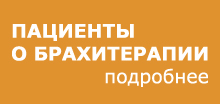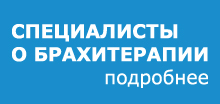Новости
Invitation to the Nucletron Prostate meeting

Nucletron is pleased to invite you to this highly informative meeting, focusing on prostate brachytherapy. Key speakers will give their view on the different treatment modalities. Clinical effectiveness, the side effects, treatment and recovery time and the cost effectiveness of LDR seed brachytherapy and HDR brachytherapy will be discussed extensively. Participants will actively work together with the key speakers on the ins-and-outs of both treatment modalities.
Next to the scientific program you will have the opportunity to experience a real-time treatment planning. A patient case will be shown live, moderated by very experienced physicians, in order to give you insight into prostate brachytherapy.
Prostate brachytherapy
Prostate cancer is the most commonly diagnosed malignancy in Western men. However, because of earlier diagnosis and advances in treatment, mortality is in decline. Current treatment options are considered to having similar efficacy. Factors such as impact on quality of life, treatment time, convenience and cost all play an increasingly important role in treatment choice and highlight the need for patient-focused treatment options. Prostate brachytherapy is on the forefront of innovation in prostate cancer treatment. Advanced computerized treatment planning and image guided delivery systems allow prostate brachytherapy to achieve highly conformal radiotherapy whilst at the same time sparing organs at risk thus minimizing the potential side effects. In other words, the two fundamental aims of radiotherapy: an effective radiation dose to the tumor and sparing of surrounding healthy tissue are being achieved.
Enabling technology
The Nucletron Oncentra Prostate (HDR) and Oncentra Seeds (LDR) planning systems are dedicated systems that provide real-time image guidance, allowing to intra-operatively determining the most efficient needle positions for optimal, patient-specific dose distribution. Oncentra Prostate, as well as the Oncentra Seeds planning system, visually guides you in the actual needle placement, so that the implant matches the predetermined needle positions as accurate as possible. Different optimization methods clearly show what dose distribution can be achieved for every patient. You are in the ‘driver’s seat,’ using the tools to support you in an optimal way, so that the patient benefits from a high quality of life with reduced side-effects compared to other treatments.
Scientific program
Location: Sintra, Lisbon area, Portugal
Target Audience: Urologists, Radiation Oncologists and Physicists
Preliminary agenda:
 Thursday, 17 March 2011
Thursday, 17 March 2011
Afternoon (start at 16.00)
- Prostate cancer treatment today
- Current status of prostate brachytherapy
Evening
- Dinner
Friday, 18 March 2011
Morning
- Sharing clinical experience
- Live case of prostate brachytherapy
Afternoon
- Clinical effectiveness and patient outcomes
- Brachytherapy optimizes use of healthcare resources
- Cost effectiveness, cost utility
- Patient preferences
Evening
- Excursion and dinner
Saturday, 19 March 2011
Morning (close at 12:30)
- New development and techniques in prostate brachytherapy
- Future aspirations and objectives of prostate brachytherapy
- Focal therapy: an option yes or no
The scientific committee:
• Prof Dimos Baltas: Physicist (Klinikum Offenbach, Germany)
• Prof Thierry Flam: Urologist (Groupe Hospitalier Cochin, Paris, France)
• Mr Christof Kastner: Urologist (Addenbrooke’s Hospital, Cambridge, UK)
• Prof Isabel Monteiro-Grillo: Radiation oncologist (Santa Maria Hospital, Lisbon, Portugal)
• Dr Marco van Vulpen: Radiation oncologist (UMC Utrecht, The Netherlands)







